This three-day recipe is worth the trouble if you want to take it on. Cake and ice cream! Continued from the Alinea Restaurant recipe for PERSIMMON, Aroma Strip, Carrot, Red Curry (Part 1)
Day Two
I’ve just finished up branding a new restaurant here in San Diego, and am now ready to blog again. Sorry for the too-long hiatus, folks. Busy. Busy. Busy. I promise, I really didn’t wait months to finish this dish!
Crack those nutmegs! Or would that be “nutsmeg”, like “passersby”? I used a hammer to crack ’em up a bit. Or you could dispense with the whole rigmarole, and just use powdered.
Then I toasted the nutmeg, cinnamon, cloves, allspice and cayenne on a sheet pan in the oven until they released their aromatic oils. Aromatherapy for home chefs!
Then I combined the toasted spices in a pot with water and sugar and brought it all to a boil. Removed from the heat and let steep.
After it had steeped and was nice and spicy, I strained the infusion into my Oster bar blender. I blended on high, adding the Pure-Cote a little at a time, and left running for TEN MINUTES. Yikes! Actually, I turned if off a couple of times, since the li’l ol’ blender wasn’t meant for such long spates of action. The instructions say to pass through a chinois again but I used a strainer. Good idea, it strained out more than several lumps of starch the blender hadn’t broken up. Then refrigerated until cool, about an hour.
What is Pure-Cote® B790?
Pure-Cote is a low-viscosity, modified food starch produced from corn by Grain Processing Corporation. It forms clear, flexible films without requiring hydration or cooking. Products thickened with Pure-Cote dry into a crispy “glass” at room temperature. It forms clear, flexible films with excellent sheen that are fast-drying and flavor-free. It functions as a strong binder for seasonings on snacks and cereals, and as a smooth, glossy coating agent for confections and baked goods. It can be used to form fruit leather! Pure-Cote may be found here, here, and here.
I poured the starch onto a sheet of acetate. (I get mine at the local art supply store Blick Art Materials.)
And then held the sheet up in two hands, rocking the edges back and forth so the liquid would slide around to make an even coat, “creating a thin, translucent layer.” Then let the excess drip back into the bowl.
This part is easy: let dry overnight at room temp. The liquid hardened into a sheet. I cut several 1-inch squares and reserved to my prep area. I’ll skewer them with some stainless steel Alinea pins I bought awhile back at J.B. Prince for MANGO, Bonito, Soy, Sesame.
Ingredients
Whole nutmeg
Whole dried cloves
Allspice berries
Cinnamon sticks
Cayenne pepper
C&H cane sugar
Water
Pure-Cote B790 from Le Sanctuaire
I decided to make a half-batch of this component recipe, and I’m glad I did. After making that whole batch of the Aroma Strips, I only used a few. And it’s not likely I’m going to very soon — unless I make direly needed sachets for the kids rooms!
When I can’t find a needed herb at farmers market, I’ll go to Walter Anderson’s, the local nursery. They have an excellent selection of culinary and medicinal plants from which to choose. Other times, I’ll head on over to Specialty Produce if I need microgreens. Or sometimes, if I have my s**t together, I’ll plan wayyyyyyy ahead, buy the seeds and grow them myself.
I blanched a bunch of hyssop leaves in salted, boiling water. Then plunged them in an ice water bath to set. After they’d cooled, I drained them, put them in my Oster blender with some simple syrup, ice water and a dash of salt, and puréed.
Then I strained the purée into a smaller bowl and refrigerated until it was again cool (the less time heated, the brighter green it will stay). Just look at those beautiful green bubbles!
Now to blend the hyssop juice with some Pure-Cote 8790 modified food starch, just like with the recipe for the Aroma Strips. After it had blended for aboout 10 minutes, I chilled it again.
Then spread it out on a prepared sheet of acetate, poured off the excess, and let dry overnight, just as before.
Ingredients
Fresh hyssop leaves
Water
Morton’s kosher salt
Simple syrup
Ice water
Pure-Cote B790 from Le Sanctuaire
The spherification process I still find quite magical. This is a fun recipe to make, and not so hard at all. I bought a large hand of fresh ginger. When I buy ginger, I always go to Thuan Phat a local Asian market. They have better quality and at much more reasonable prices than the large chain groceries.
I peeled and sliced it really thin, then put it in a stainless bowl. I brought some water, sugar and the calcium lactate to a boil in a small saucepan, then poured it over the ginger to steep, covered, for awhile. I buy my hydrocolloids (or “dubious white powders,” as my teen-aged son calls them) from several sources. Those in this component recipe I ordered from L’Epicerie in New York. I strained the infusion, and reserved the ginger for another use. (I actually later made a batch of ginger syrup to use in teas.)
Then I filled a plastic, one-inch hemispheric mold with the liquid. These round molds can be procured on the Internet for little money, and come in quite handy! I use them all the time to make flavored ice “spheres” for drinks. Then popped the mold into the freezer, and reserved the leftover ginger infusion.
To make the alginate bath, I whisked together some water, sugar and sodium alginate, and heated it in a saucepan, and blended it with an immersion blender until all the solids dissolved. Then I strained it into a large Pyrex bowl to cool. I wanted to see this…
At first it was clear. As it cooled, it thickened and grew a bit cloudy. But that’s not what I was fascinated with. Its texture reminded me of good old-fashioned, sci-fi movie slime! Think Ghostbusters. Or Alien. Alinea-Alien slime, woohoo!
Here’s what the ginger spheres look like in their molds:

I carefully dropped a few of the frozen ginger spheres in the bath, and let them thaw, making sure they did not touch.
As they are exposed to the alginate bath, their surfaces harden into a gel, encapsulating their liquid ginger interiors.
The longer you leave them in, the thicker their shells. As Spock always says, “Fascinating…”
I removed each sphere to a water bath, to rinse off.
Then stored in them in the remaining ginger infusion. They’re beautiful!
Ingredients
Fresh ginger, from Thuan Phat Market
Water
C&H cane sugar
Calcium lactate, from L’Epicerie
Sodium alginate, from L’Epicerie
Now to make the tasty carrot “meringue…”
You can buy carrot juice, or juice your own. I bought fresh carrots at the local farmer’s market and juiced them in my Breville Juicer. I love the taste of fresh carrot juice, it’s a lot sweeter than you’d imagine! In a medium saucepan, I brought the carrot juice, sugar and water to a boil, to reduce the solids. The let cool, and refrigerated.
I combined some of the sweetened carrot juice with a measure of Methocel F50.
What’s Methocel F50?
Hydroxypropyl methylcellulose is a vegetable cellulose. The brand Methocel F50 is made by Dow Chemical. It gels when heat is applied, and when chilled acts as a thickener. I purchased my supply from Will Goldfarb’s company Willpowder.
Then I used a Cuisinart Smartstick immersion blender to shear the starch into the liquid. Once it was well mixed, I transferred it to a KitchenAid mixer fitted with the wire whisk attachment, and whisked on high. It took about 15 minutes to form stiff peaks.
I spatulaed it out to a smooth layer on a silicone mat and dehydrated in my American Harvest dehydrator at 130°F for about six hours, until it had dried out.
It stuck a little bit, but was quite dry and crumbled easily.
I broke it up into smaller pieces, and reserved to a tightly sealed plastic container in my prep area.
Ingredients
Fresh carrots, from Little Italy Mercato farmer’s market
Water
C&H cane sugar
Methocel F50, from Willpowder
If you’ve ever made peanut brittle before, then you can do this too. I used California pistachios for this dish, way easier than finding Iranian pistachios. This is basically the same component recipe as that used in RASPBERRY, Goat’s Milk, Red Pepper Taffy, Pistachio. Only this time, I had no problems with the domestic supply of pistachios.
I toasted the pistachios on a sheet tray in the oven, until they released their oils. Smells good! Then got another tray ready with a silicone mat.
I combined the water and sugar in a large saucepan and brought to a boil. And boiled it vigorously until it reached the “hard-crack” stage, 342°F on a candy thermometer. That takes a while.
Pg. 288, Pistachio Brittle
Change second set of temperatures from “240°F (116°C)” to “342°F (172°C)”.
I removed from the heat, added the baking soda then the pistachios, and stirred quickly. BE VERY CAREFUL HERE. Make sure you take it off the fire before you add the baking soda. It foams up superduperfast! Boiling hot sugar is very dangerous, and can burn badly.
I poured it out onto the prepared sheet tray, and let it cool. Finally, after it had cooled, I broke it up into smaller pieces, and reserved to a tightly sealed plastic container in my prep area.
Ingredients
Shelled, unsalted pistachios
C&H cane sugar
Water
Baking soda
I’m not a baker. Baking. I always seem to have trouble with it. Maybe that’s because I’ve never really like measuring out the ingredients. Much to my surprise, this component recipe came out well — despite my slovenly ways!
Just as in the previous recipe, I toasted the pistachios on a sheet tray in the oven, until they released their oils. Then I ground them up in a food processor.
Mise en place for the pistachio shortbread:

I combined the butter, sugar, salt and vanilla in the stainless bowl of my KitchenAid mixer. Then beat together with the paddle attachment on medium speed. Switched to slow speed and incorporated the eggs. Then with the mixer still running, I slowly added the ground pistachios and flour, until it was completely mixed and forming a cookie dough.
I prepared a sheet tray with parchment paper, and sprayed with PAM. Then rolled out the dough on it, to a depth of about a quarter-inch, and refrigerated until it hardened up a bit. Removed, gave the top a slight egg wash, and popped in the oven at 350°F for about 15 minutes.
I let the shortbread cool on a rack, and as with the previous recipes, broke it up into smaller pieces, finally reserving to a tightly sealed plastic container in my prep area.
Ingredients
Shelled, unsalted pistachios
Challenge unsalted butter
C&H confectioner’s sugar
Morton’s kosher salt, to taste
Vanilla bean
Eggs
Pastry flour
Water
This is easy to make. Although, the final flavor depends on the quality of the pistachio oil you procure. So splurge!
Mise en place for the pistachio powder:

I mixed the pistachio oil, sugar and salt in a bowl, then added tapioca maltodextrin powder until it incorporated the oil.
I had to use quite a bit more maltodextrin than called for by the recipe to get a dry enough powder. But once I did, it was quite delicious!
Ingredients
Pistachio oil
C&H confectioner’s sugar
Morton’s kosher salt, to taste
Tapioca maltodextrin, from Willpowder
To be Continued…
Next, PERSIMMON, Aroma Strip, Carrot, Red Curry (Part 3)

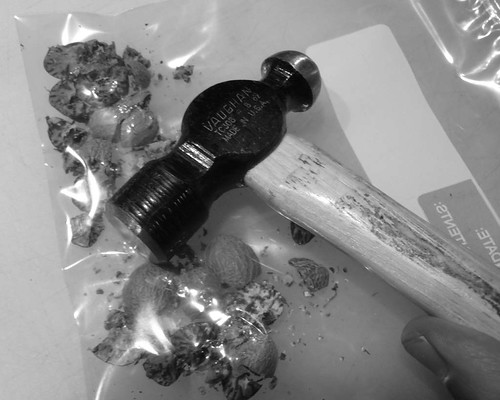
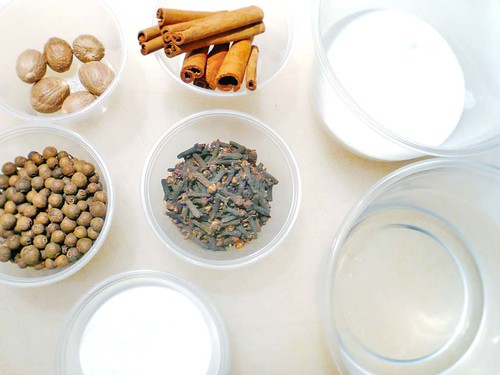
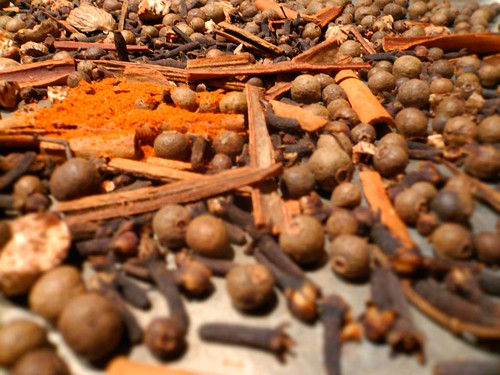



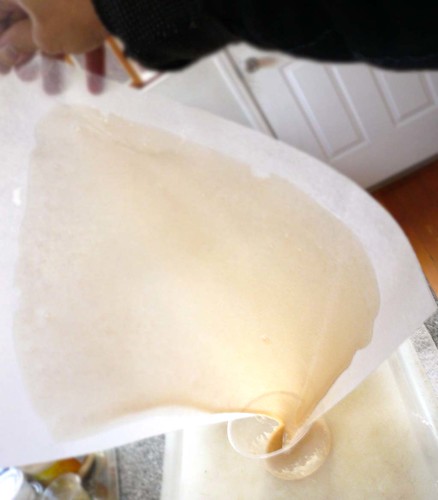
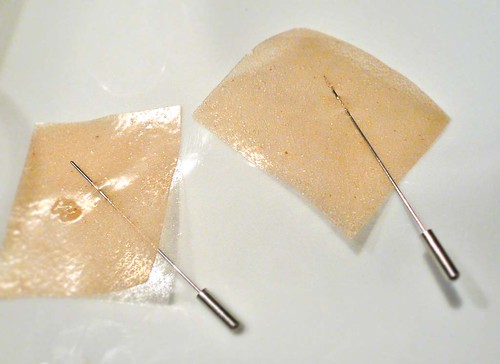






















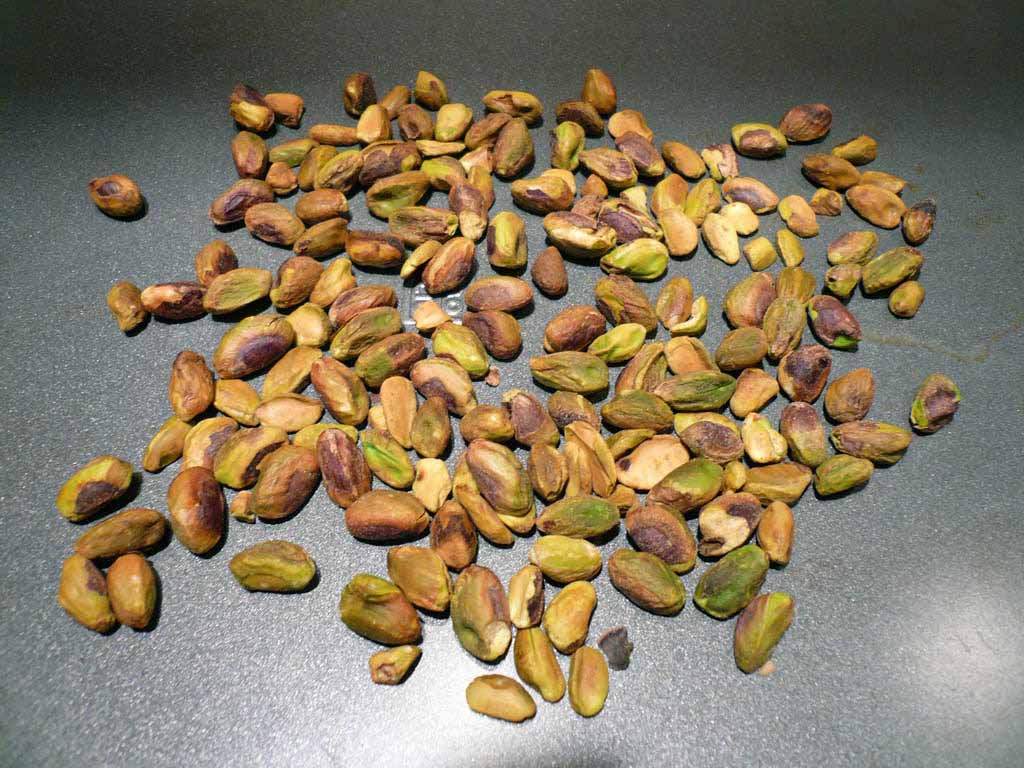







2 Responses to PERSIMMON, Aroma Strip, Carrot, Red Curry (Part 2)